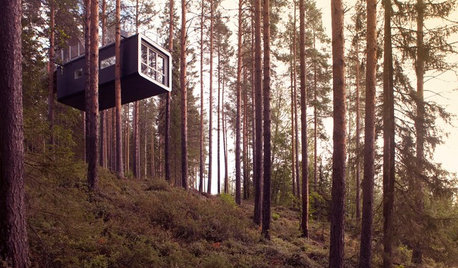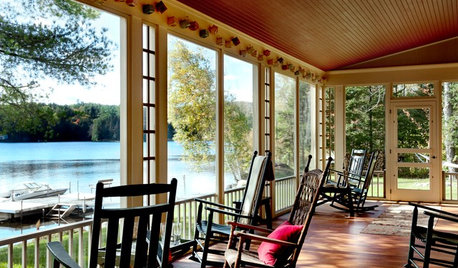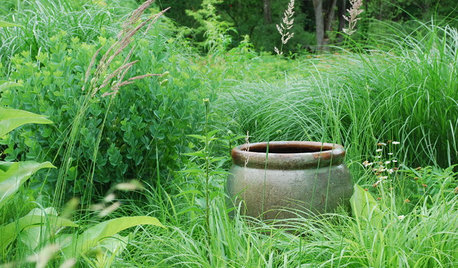Just some observations of trees I made this weekend while driving from MD to Ohio (Akron). We drove along I-70 into PA then the PA Turnpike west into Ohio (then the OH turnpike to I-76 into Akron).
First point...sycamore anthracnose. The anthracnose here in Central MD (Howard Cty) is probably the worst I've ever seen - even trees not usually affected to any noticeable degree by the shoot blight phase look absolutely horrible this year. Many of the straight P. occidentalis are almost completely bare, even individual specimens that typically seem to leaf out normally most years. However, as we drove west, the Platanus in the woods we saw looked better and better, to the point that in most of NE Ohio the anthracnose didn't look too bad at all. Although leaves still appeared small on most of the trees there I saw, they appeared to be the makings of a normal/full canopy, and are past the stage where shoot blight is a concern. I can't speak for the rest of Ohio, however, as I didn't go much outside the Akron-Canton area.
Watching the progression of leafout was interesting. All of MD was essentially completely leafed out, as was OH for the most part. In PA, we took a detour up to the Flight 93 Memorial near Shanksville. Up there, around 2500 ft elevation, some of the oaks were barely in the bud-swell/catkins stage...is that normal? The elevation isn't THAT much higher, this isn't the Rockies! At that point it appeared the trees were a good 3-4 weeks behind where they are here.
Pennsylvania in particular seems to have a lot of weird things going on with its trees. In PA along I-70 the woods appear mostly healthy but there are some occasional dead large trees at higher than usual numbers. They appear to have been dead a while...my guess (based on the area) might be gypsy moth damage from the major outbreaks about a decade ago.
The most interesting phenomenon, however, are the large numbers of dead/dying trees right along the roadsides. The trees that are alive seem to have severe witch's brooms & are sprouting leaves from thicker, older stems. These are really only close to the road, further up the hillsides or a couple hundred feet off the road, the trees appear fine for the most part. Oddly they also appear to be further along leaf-out away from the road than right along it, even way up on the hilltops.
There are some trees like this with the witch's brooms all the way from PA into Ohio, but most heavily concentrated from just before the Allegheny Mountain tunnel near Bedford, going west to a bit past Somerset. After that they're more scattered. These aren't ashes affected by EAB (more on that in a moment). They seem to be many different trees...some oaks I could tell & some Acer rubrums, others I wasn't sure due to the disfigurement & driving by at 70 mph.
I think it's salt spray damage, that seems to be the reason I hear most often. It also explains the many conifers with browned foliage (that appear to mostly have normal looking candles growing so far in spite of the brown needles). In this stretch of the PA turnpike, it's almost every tree along the road that looks like this. Some trees beyond this point look like this, in much smaller numbers...I get that it's probably salt spray, but why is it SO much more of a problem in that little stretch of PA?
Somewhat sadly, the native trees generally most tolerant of salt, Fraxinus (ashes) are dying for a different reason...the Emerald Ash Border.
Now on to my EAB observations. I noticed on our travels that in Ohio in particular, the damage was patchy. On the Ohio Turnpike going west from the PA/OH line, there is about a 5 mile stretch where tree carnage is rampant...some 60% of roadside trees appear dead, and from the form, bark, etc I am 99% sure they're all Ashes. Many have tufts of sprouts from the base with green leaves, but the tops are D-E-A-D dead.
Then there's a long stretch into Akron where most ashes look fine, and only isolated areas that seem to have a few dead/dying ashes.
Anyone got any comments or anything to add to this?



















salicaceae
bengz6westmd
Related Professionals
Chattanooga Landscape Architects & Landscape Designers · Simi Valley Landscape Architects & Landscape Designers · Essex Landscape Contractors · Overland Park Landscape Contractors · Wentzville Landscape Contractors · Wethersfield Landscape Contractors · Broomfield Siding & Exteriors · Littleton Siding & Exteriors · Bonney Lake Decks, Patios & Outdoor Enclosures · Del Aire Decks, Patios & Outdoor Enclosures · Fullerton Decks, Patios & Outdoor Enclosures · Hockessin Decks, Patios & Outdoor Enclosures · Hyattsville Decks, Patios & Outdoor Enclosures · Jackson Decks, Patios & Outdoor Enclosures · Miami Decks, Patios & Outdoor Enclosureshairmetal4everOriginal Author
famartin
poaky1
davidrt28 (zone 7)
bengz6westmd
famartin
bengz6westmd
hairmetal4everOriginal Author